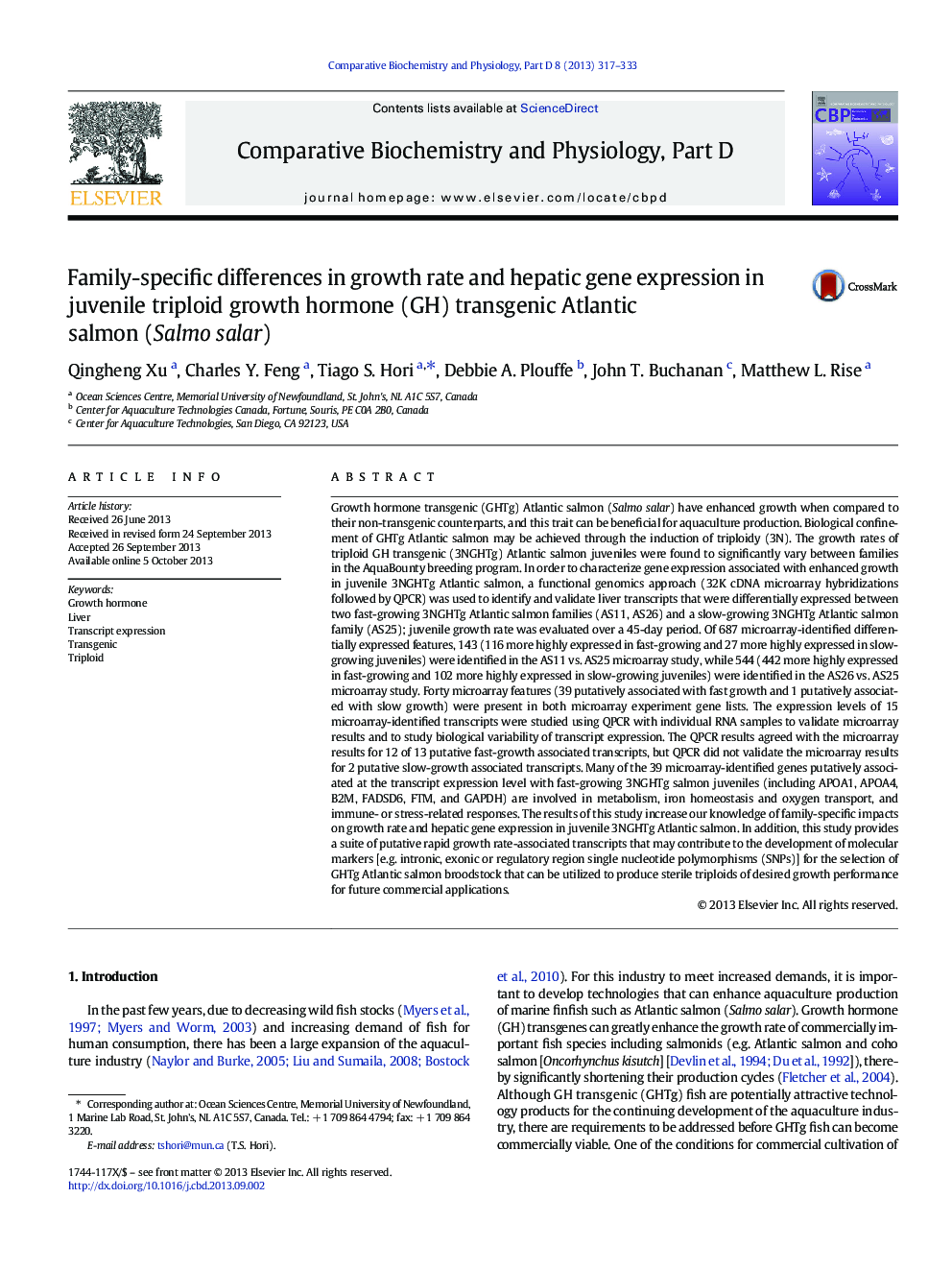| کد مقاله | کد نشریه | سال انتشار | مقاله انگلیسی | نسخه تمام متن |
|---|---|---|---|---|
| 1978594 | 1061609 | 2013 | 17 صفحه PDF | دانلود رایگان |

Growth hormone transgenic (GHTg) Atlantic salmon (Salmo salar) have enhanced growth when compared to their non-transgenic counterparts, and this trait can be beneficial for aquaculture production. Biological confinement of GHTg Atlantic salmon may be achieved through the induction of triploidy (3N). The growth rates of triploid GH transgenic (3NGHTg) Atlantic salmon juveniles were found to significantly vary between families in the AquaBounty breeding program. In order to characterize gene expression associated with enhanced growth in juvenile 3NGHTg Atlantic salmon, a functional genomics approach (32K cDNA microarray hybridizations followed by QPCR) was used to identify and validate liver transcripts that were differentially expressed between two fast-growing 3NGHTg Atlantic salmon families (AS11, AS26) and a slow-growing 3NGHTg Atlantic salmon family (AS25); juvenile growth rate was evaluated over a 45-day period. Of 687 microarray-identified differentially expressed features, 143 (116 more highly expressed in fast-growing and 27 more highly expressed in slow-growing juveniles) were identified in the AS11 vs. AS25 microarray study, while 544 (442 more highly expressed in fast-growing and 102 more highly expressed in slow-growing juveniles) were identified in the AS26 vs. AS25 microarray study. Forty microarray features (39 putatively associated with fast growth and 1 putatively associated with slow growth) were present in both microarray experiment gene lists. The expression levels of 15 microarray-identified transcripts were studied using QPCR with individual RNA samples to validate microarray results and to study biological variability of transcript expression. The QPCR results agreed with the microarray results for 12 of 13 putative fast-growth associated transcripts, but QPCR did not validate the microarray results for 2 putative slow-growth associated transcripts. Many of the 39 microarray-identified genes putatively associated at the transcript expression level with fast-growing 3NGHTg salmon juveniles (including APOA1, APOA4, B2M, FADSD6, FTM, and GAPDH) are involved in metabolism, iron homeostasis and oxygen transport, and immune- or stress-related responses. The results of this study increase our knowledge of family-specific impacts on growth rate and hepatic gene expression in juvenile 3NGHTg Atlantic salmon. In addition, this study provides a suite of putative rapid growth rate-associated transcripts that may contribute to the development of molecular markers [e.g. intronic, exonic or regulatory region single nucleotide polymorphisms (SNPs)] for the selection of GHTg Atlantic salmon broodstock that can be utilized to produce sterile triploids of desired growth performance for future commercial applications.
Journal: Comparative Biochemistry and Physiology Part D: Genomics and Proteomics - Volume 8, Issue 4, December 2013, Pages 317–333